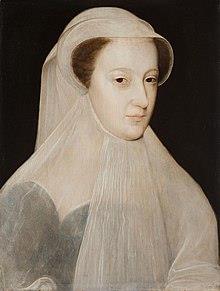Anita Di Rienzo

Image: Galería Borghese, Roma
Garments, from lingerie to overcoats, have always denoted the economic and social status of the wearer, no matter if the latter is tall or short, thin or fat, elegant or lacking in bearing because every dress is a message and every colour a choice. Spokeswoman for this modern truth is Amanda Presley, played by a stunning Meryl Streep in the Devil wears Prada, who, addressing her new secretary, and therefore anyone who does not believe in the value of fashion, recalls:
“You think this has nothing to do with you. You go to your closet and you select… I don’t know… that lumpy blue sweater, for instance because you’re trying to tell the world that you take yourself too seriously to care about what you put on your back.”
Amanda Presley’s character is outspoken and tough in her judgment but at the same time she highlights the importance of colours and how people are often unconsciously led to choose them according to the message they want to give other people. Having said that, few people are aware of the ancient origin of the language of colours in fashion. It was precisely the Renaissance, with its new achievements in the cultural, human and scientific fields, that redesigned the fate of fashion. Indeed, the refinement of the human ability to apply different colours in places where they are not naturally found, led the Renaissance men to create new shades, which conveyed important social messages.
Black

Over the centuries black has been worn on a wide range of occasions, from funerals to elegant dinners. But if the use of black as the colour of mourning is intuitive, it is curious why black today is synonymous with elegance and refinement. In order to fully understand, it is necessary to take a step back in time, to the beginning of the 16th century when the Italian courtier, arbiter elegantiae, humanist, scholar and diplomat Baldassarre Castiglione published his Book of the Courtier (Il Libro del Cortegiano). The book described the ideal customs and habits of the perfect courtier and it highly recommended black as it gave the wearer gracefulness and authority. Besides, the clothing advice given by Baldassarre Castiglione goes hand in hand with the Counter-Reformation and the promulgation in those years of laws prohibiting excessively eccentric and expensive fabrics, regulations that have certainly promoted the use of darker colours in clothing.
From the very beginning paintings acted as visual documents and vehicles of this innovation in the fashion industry, so much so that in 1514 Baldassarre Castiglione himself was portrayed by Raphael wearing a black vest with fur sleeves and an elegant hat of the same colour, a masterpiece which perfectly rendered the exquisite craftsmanship of the dark fabrics through the artist’s brush. The remarkable talent of Italian painters in rendering black and its nuances was one of the main reasons that helped to make black fashionable among clergymen and princes during the Renaissance, a tradition which has persisted to the present day.
White

While the rules of male elegance required the use of black in formal circumstances, this was not the case for women who, especially from the reign of Queen Victoria onwards, wore it in mourning. Like a modern fashion icon, Queen Victoria also introduced the trend of white wedding dresses, with wide skirts and long bridal trains, known as Victorian Style. However, white has not always been the colour of wedding gowns; for centuries, brides from privileged backgrounds used to wear brightly coloured dresses which recalled the colours of the coats of arms pertaining to both bride and groom, evoking the alliance between their families. This raises the question of how and when it became appropriate for women to wear white, an issue that can be addressed through art history.
One of the first brides portrayed in a white richly embroidered wedding gown, embellished with fine jewellery, was Mary Stuart Queen of Scots who, in 1558 when she was barely fifteen, married Francis, the Dauphin of France. Back then, white was generally worn by young women as a symbol of purity and virginity, with the exception of France, where white gowns were also associated with the Queens’ mourning. Therefore, when two years later King Francis died, many blamed Mary Stuart’s wedding dress for bringing bad luck. There are no historically documented explanations of Mary’s choice of white but, apart from symbolic meanings, wearing a white dress was an expression of the social standing of the maiden, since it was difficult to keep white garments spotless.
The year of the death of Mary Stuart’s first husband Francis II, 1560, was the occasion for a second portrait, this time as a widow wearing a dark dress covered in white veils, symbolising the loss of three members of her family: her husband, her mother and her father-in-law.
From the time of Mary Stuart to the days of Queen Victoria, other brides have been portrayed wearing white dresses, usually embroidered in gold and silver threads, such as Marie Louise of Austria, wife of Napoleon Bonaparte. However, these were individual cases, not yet linked to a trend. It is only the advent of photography and specifically, the wide diffusion among the public of different countries of the official wedding photo of Queen Victoria and Prince Albert of Saxe-Coburg, that will turn the wedding white dress into part of the tradition.
Red

Red is the colour of extremes: of the blood flowing in the veins, of Christian rebirth, of anger, passion, violence, but also of royalty. It conveys strong and vital messages through its countless shades. The red with the brightest hues, also known as crimson, was perhaps the first to take on a well-defined meaning, it is the same red as blood, which was used in primitive rituals and therefore, associated with the officiant. With the advent of Christianity, crimson adapted to the new spirituality without losing its underlying symbolism, so that it became almost an exclusive privilege of cardinals. It is curious that during the Renaissance, crimson was also used for the highest government offices, generally held by nobles, the same offices held by cardinals in the Church. Thus, red began to represent high status, as demonstrated by several diplomats and monarchs portrayed wearing red, since it also was very difficult to obtain and preserve. This tradition may also derive from the Roman Empire, when senators used to indicate their office by decorating their tunic with a strip of purple red, a colour extremely expensive, that only a few privileged could afford.
In painting, the most famous shade of red is perhaps the Titian red, a warm and vibrant hue that appears in all the subjects of Titian’s works: from diplomats to cardinals to allegories of Love. It is precisely in the Sacred and Profane Love of the Venetian artist that the red of the mantle partly covering the figure on the right mixes sacred and carnal values in a single shade, combining the sensuality of the female body as a representation of contempt for corruptible earthly things, with sacred love, symbolised by the vessel that the allegorical figure holds in her right hand. The red favoured by Titian then became fashionable among women as a hair dye, with its reddish highlights and blond shades, a fashion that never seems to have waned. The colour red has taken on a thousand other meanings, from dogal mourning to prostitution, to finally becoming high fashion for the general public in the of 20th century, in part due to the Italian clothing fashion house Valentino.
The language of colours is certainly not an exact science, it is never equal to itself, it is not immediate and it does not last over time, but in its fluidity it continues to amaze those who approach it because, just as fashion always comes back with new designers, so colours come back with new masters and interpreters. We just have to wait for the next trend.
Volume 35 no 2 November / December 2020
